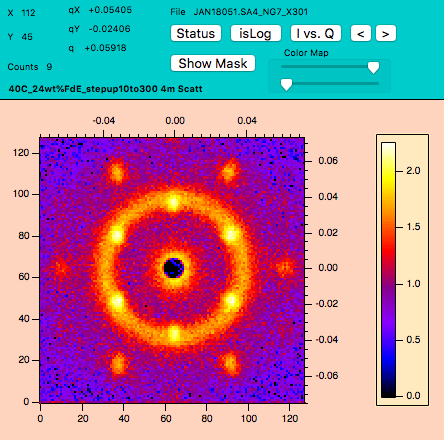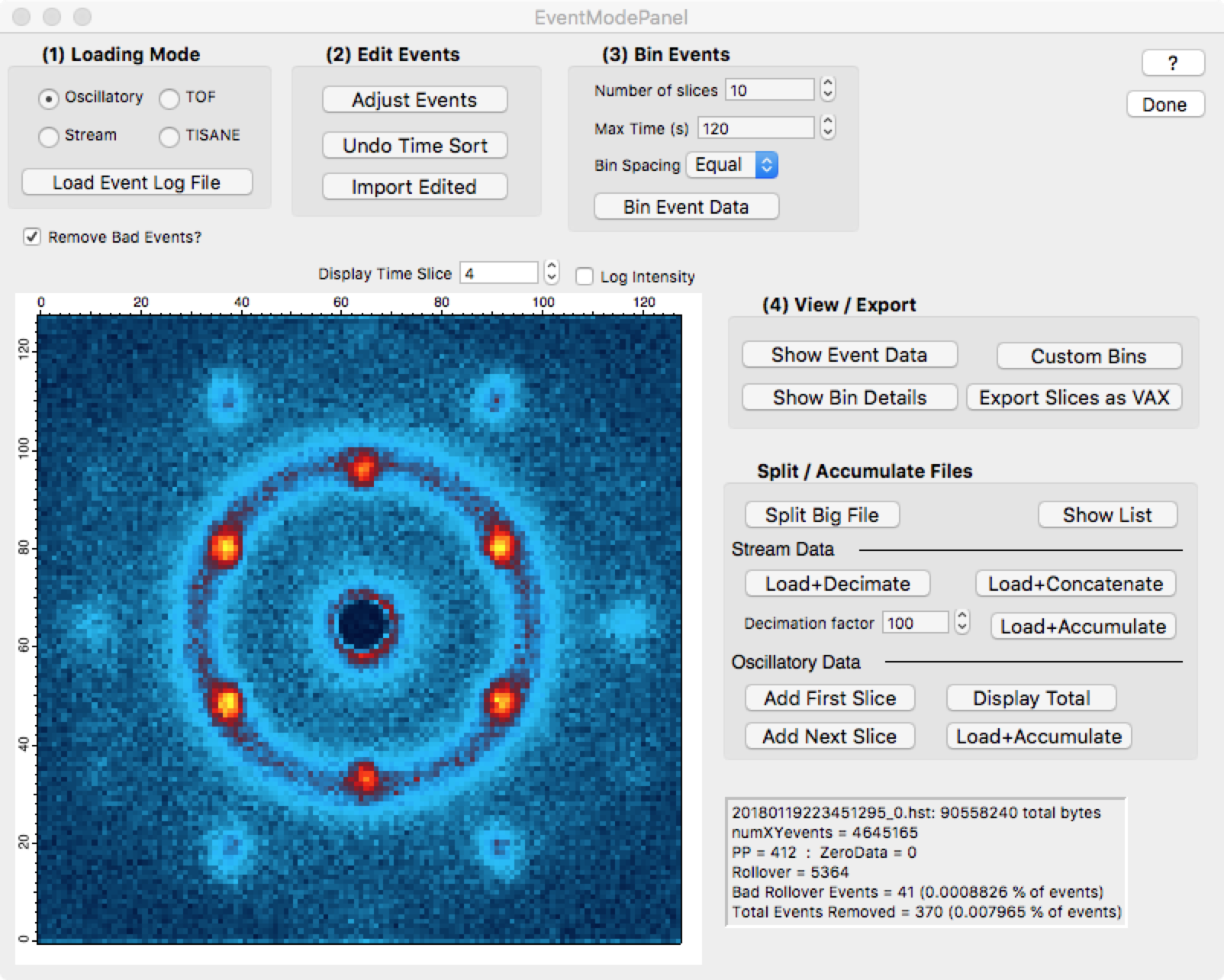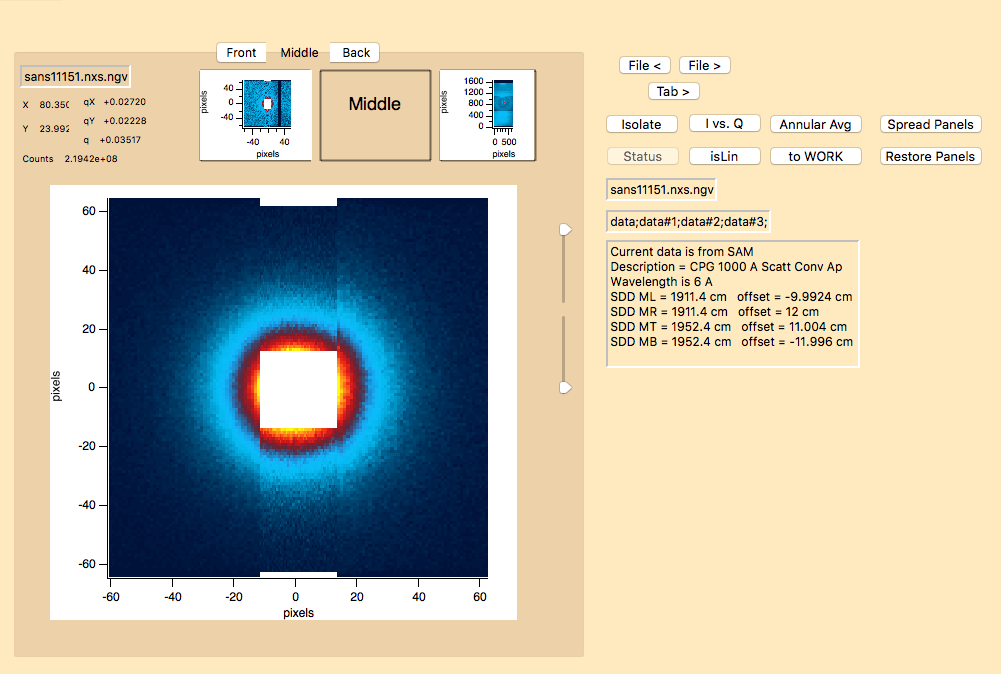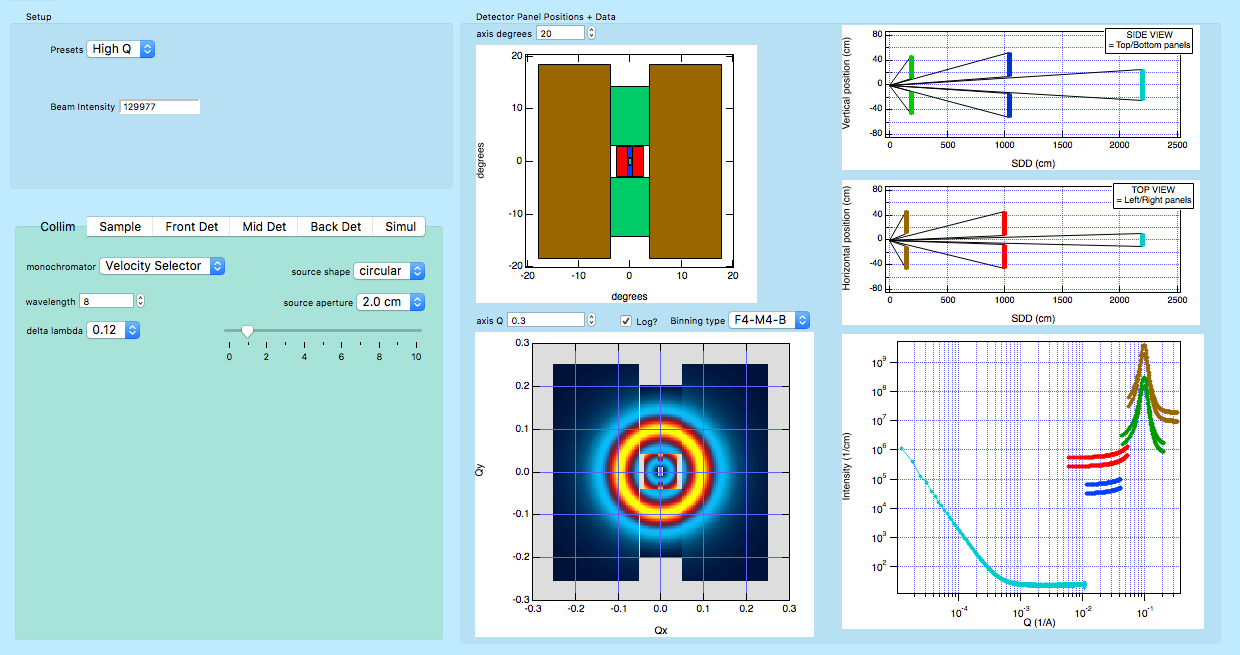
Small-Angle, Very-Small, and Ultra-Small Neutron Scattering
Reduction and analysis of SANS, VSANS, and USANS data using Igor Pro
Dr. Steve Kline, NIST Center for Neutron Research (NCNR)
The NCNR has a long history of providing easy to use data reduction and analysis tools to its facility users. In the case of the small-angle neutron scattering instruments, this is through a set of macros and functions implemented using IGOR Pro™ from WaveMetrics Inc, which is a general-purpose plotting and data analysis tool with a rich in-built programming language. We used Igor to develop a software package for performing reduction and analysis of small-angle (SANS), ultra-small-angle (USANS) data, and very-small-angle neutron scattering (VSANS) data. Igor has been used for the reduction of neutron scattering data at the NCNR for nearly 20 years.
The flexibility of Igor allows easy handling of the diverse formats of raw data from each of the instruments which include VAX binary, ASCII text, HDF-5, Mixed 32-bit binary streams, and 64 bit-binary streams (up to 1.5 GB, > 100 M data points). Graphical interfaces have been custom-tailored for the needs of each of the scattering instruments, permitting users to visualize and quickly reduce raw data from the instruments into one- or two-dimensional formats for interpretation. The resulting reduced data is then ready for analysis using model-independent methods or non-linear fitting to one of a large and growing catalog of NCNR-provided structural models.
Analysis tools include model-independent calculations, linearized fitting, non-linear model fitting, and global analysis of multiple data sets. Each of the instruments has very different instrument resolution smearing effects, and each is properly handled automatically during analysis. Integrated help files are included for every processing step and analysis model, along with detailed examples and test data.
Igor has also been used to develop simulators for each instrument. These simulators are used as experiment planning tools, providing a valuable teaching aid to help those new to scattering to develop a feel for how different structures will scatter, and how changing experiment design will affect the scattering and the ultimate success of the experiment.
The reduction operations and analysis models are written in a modular format for extensibility, allowing users to contribute code and models for distribution to all users. The source code for the entire SANS package is freely available, allowing anyone to develop additional tools and models that can be made available for the entire scattering community.

An example of a SANS data file.

A “small” event mode SANS data file.
This data file is a binary stream of ≈ 90 MB and contains more than 4.6 million data points. Event files larger than 1.5 GB can be processed, containing more than 100 million neutron events.

An example of a VSANS data file.
The VSANS instrument has 3 detector carriages (Front, Middle, Back) with 4 panels of tubes on the front and middle carriages, and a high-resolution 2D detector on the back carriage for a total of 9 detector panels. Data for all nine panels are stored in a single HDF5 format file.

The VSANS instrument simulator.
Individual components of the instrument configuration can be changed, especially the location of the 9 detector panels to determine an optimal configuration for a particular experiment.
See Also
ANL Small-Angle Scattering Special Interest Group's Software, including Irena and Nika, both based on Igor Pro.

Forum

Support

Gallery
Igor Pro 10
Learn More
Igor XOP Toolkit
Learn More
Igor NIDAQ Tools MX
Learn More